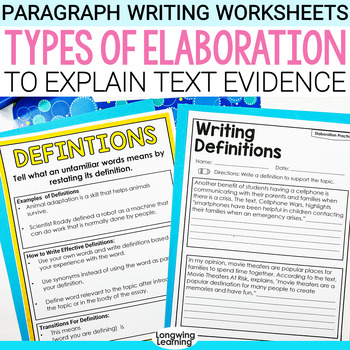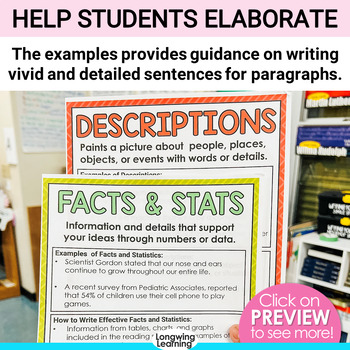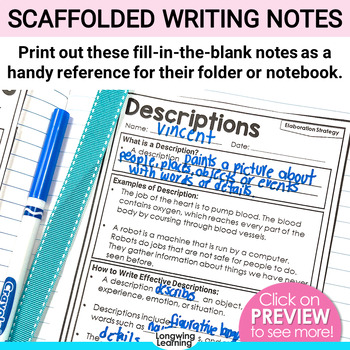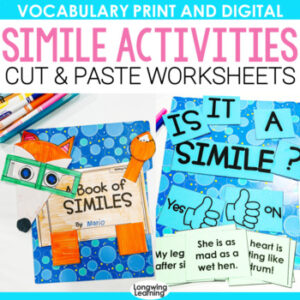Description
Teach students elaboration writing strategies to explain their text evidence or add more details to their paragraphs through elaboration examples, sentence starters for elaboration, and paragraph writing practice with these writing practice worksheets and anchor charts. These writing strategies are ideal for 4th and 5th-grade students to help them write detailed paragraphs when explaining their text evidence in text-based writing through explicit examples and handy elaboration sentence starters. No more vague or incomplete paragraphs!
What does the download include?
✨ Engaging Worksheets to Explain Text Evidence
Each worksheet’s format provides step-by-step practices to strengthen their writing skills.
Your students will see the importance of providing detailed explanations in their paragraphs, taking their essays to a new level of awesomeness.
✨Colorful Anchor Charts: Student’s Handy Writing Sidekicks
The anchor charts act as visual aids, reinforcing the writing concepts and techniques to elaborate and explain their text evidence.
They’ll become handy references your students can turn to whenever they need a boost of writing inspiration.
With these resources, your students will grasp how to explain or elaborate text evidence like true writing champions!
Both worksheets and anchor charts include examples and definitions of the seven most common types of elaboration techniques in writing.
- Anecdotes
- Examples
- Definitions
- Facts and Statistics
- Quotes
- Dialogue
- Descriptions














